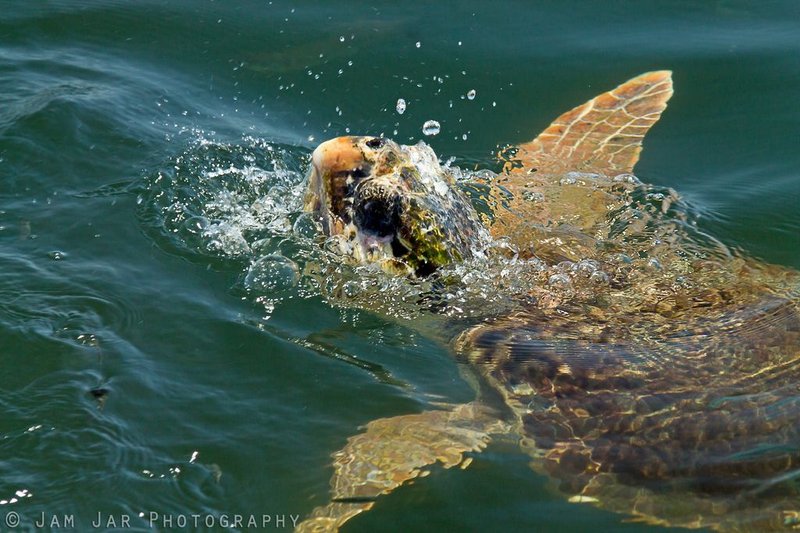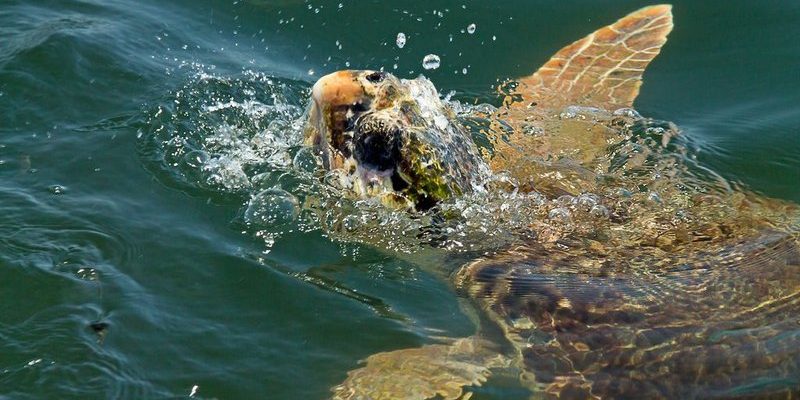
Imagine walking through a bustling city, trying to navigate the crowd while also dodging obstacles like construction zones, cars, and bicycles. For loggerhead turtles, the ocean is their city, and the threats they face can be just as overwhelming. From plastic pollution to climate change, there are many challenges that these turtles must overcome. Here’s a closer look at some of the most pressing threats to loggerhead turtles and what we can do about them.
1. Habitat Loss and Degradation
Loggerhead turtles rely on various habitats throughout their lives, including beaches for nesting and marine environments for feeding. Unfortunately, many of these areas are being lost due to human activity. Coastal development is a significant contributor to habitat degradation. Think of it like building skyscrapers where a forest once stood; not only does it disrupt the local ecosystem, but it also affects the animals that depended on it.
Beach erosion is another major issue. Natural processes, like storms and rising sea levels, can wash away sandy nesting sites. This can be particularly detrimental because loggerhead turtles tend to return to the same beaches where they hatched to lay their eggs. If those beaches disappear, so does their chance to reproduce successfully.
Moreover, dam building and river modifications can hinder the necessary flow of sand to beaches, ultimately affecting nesting habitats. Protecting coastal areas and restoring natural habitats are crucial steps in helping loggerhead turtles thrive.
2. Climate Change
You might be wondering how something as broad as climate change affects these turtles. Well, climate change impacts the loggerhead turtle in several ways. One of the most significant effects is the rising temperatures. Did you know that the temperature of the sand where turtle eggs are laid can determine the sex of the hatchlings? Warmer sands produce more females, while cooler areas produce males. As climate change shifts temperature patterns, it can lead to a skewed sex ratio, potentially threatening future populations.
Additionally, climate change causes rising sea levels, leading to the loss of nesting beaches and increased flooding. Storms are also becoming more intense; these storms can wash away nests before the eggs have a chance to hatch, significantly reducing the number of hatchlings that survive.
Furthermore, changing ocean conditions can affect the availability of food. Loggerhead turtles primarily feed on jellyfish, crustaceans, and other marine life. Altered currents and temperatures can disrupt these food chains, making it harder for turtles to find the nourishment they need.
3. Marine Debris
Imagine swimming in the ocean and suddenly being entangled in a net or choking on a piece of plastic. This is the reality for many loggerhead turtles. Marine debris, especially plastic waste, poses a severe threat to their survival. Turtles often mistake plastic bags for jellyfish, leading to ingestion. Consuming plastic can cause internal injuries, blockages, and even death.
Entanglement in fishing gear, like nets and lines, is another serious issue. When turtles get caught in abandoned or discarded fishing gear, they can’t swim properly, which can lead to drowning.
It’s a grim picture, but it’s one that we can change. Reducing plastic use, participating in beach clean-ups, and advocating for responsible waste disposal can significantly decrease the amount of debris in the ocean, giving turtles a better chance at survival.
4. Fishing Practices
Fishing might seem like a harmless sport or a way to put food on the table, but it can have unintended consequences for loggerhead turtles. Certain fishing methods, like trawling and longlining, can inadvertently catch turtles. This is known as bycatch, and it’s a significant problem.
Picture a turtle swimming peacefully when suddenly it’s caught in a net, unable to escape. Bycatch can lead to injury or death, which is devastating for turtle populations.
To combat this issue, it’s essential to develop and promote more turtle-friendly fishing practices. Alternatives like circle hooks, turtle excluder devices, and time-area closures can help reduce the impact of fishing on these ancient mariners.
5. Climate Change and Disease
Here’s a reality check: Climate change isn’t just about warmer temperatures. It’s also contributing to the rise of diseases that can affect loggerhead turtles. Warmer waters can promote the growth of harmful algae blooms, which can lead to diseases that impact turtle health. Just like humans suffer from conditions worsened by air pollution, turtles face greater risks when their environment is compromised.
Common diseases that affect loggerhead turtles include fibropapillomatosis, a condition that causes tumors to grow on their bodies. These growths can interfere with their ability to swim, feed, or even breathe, making survival extremely challenging.
Understanding how climate change impacts overall turtle health is essential for conservation efforts. By reducing emissions and promoting practices that tackle climate change, we can help give loggerheads a fighting chance against these diseases.
6. Illegal Trade and Poaching
Sadly, loggerhead turtles also fall victim to illegal trade and poaching. Some people hunt these turtles for their meat or shells, while others poach their eggs from nests for food or sale. It’s like a heist in the sea, and it’s one that threatens the species’ existence.
Even with laws in place to protect these turtles, enforcement can be weak, especially in areas where law enforcement is limited. Raising awareness about the importance of protecting these magnificent creatures can help reduce this illicit activity.
Organizations and local communities can play a significant role in monitoring turtle populations and ensuring that laws are respected. Education campaigns can inform people about the consequences of poaching and the importance of preserving these animals for future generations.
7. Human Interactions
Finally, let’s not overlook the everyday human interactions that can pose threats to loggerhead turtles. Boating, jet skiing, and other water activities can disturb nesting beaches and feeding areas. Imagine trying to enjoy a peaceful day at the beach, and suddenly, loud engines disrupt the calm—turtles experience this too.
Even beachgoers can unintentionally harm nesting sites by trampling on them or leaving behind trash. It’s crucial for people to be mindful of their impact on these creatures. Responsible behavior, like keeping a distance from nesting sites and properly disposing of waste, can make a big difference in the lives of loggerhead turtles.
Community involvement is key. Initiatives like beach patrols, responsible tourism programs, and educational workshops can help foster a culture of respect and care for the ocean and its inhabitants.
In conclusion, the loggerhead turtle is a resilient creature, but it cannot face these challenges alone. By understanding the common threats these turtles encounter in the wild, we can collectively work towards solutions to ensure they continue to thrive for generations to come. Whether it’s reducing plastic use, supporting sustainable fishing practices, or simply being more aware of our interactions with nature, every small action counts. Together, we can make a significant impact on the future of these amazing turtles.

